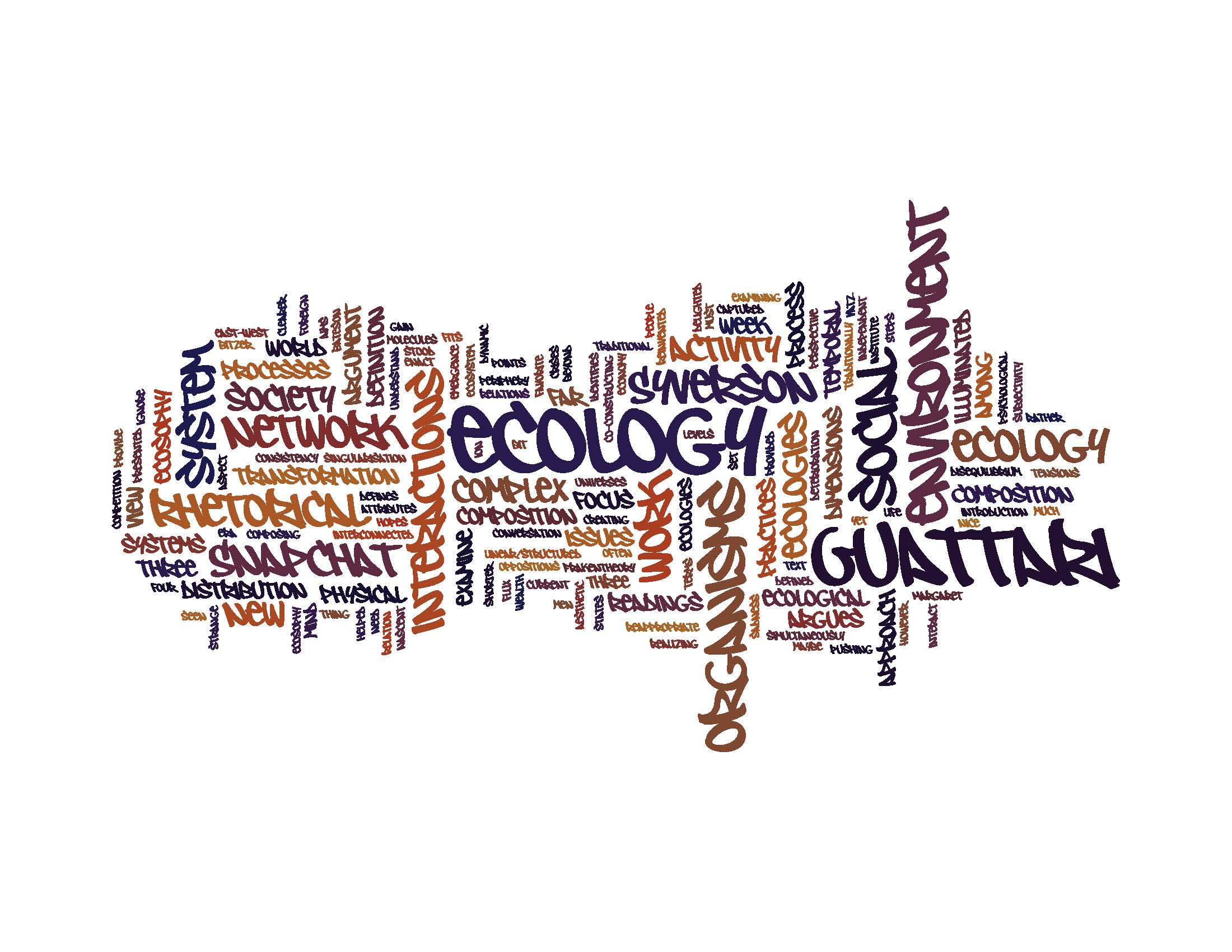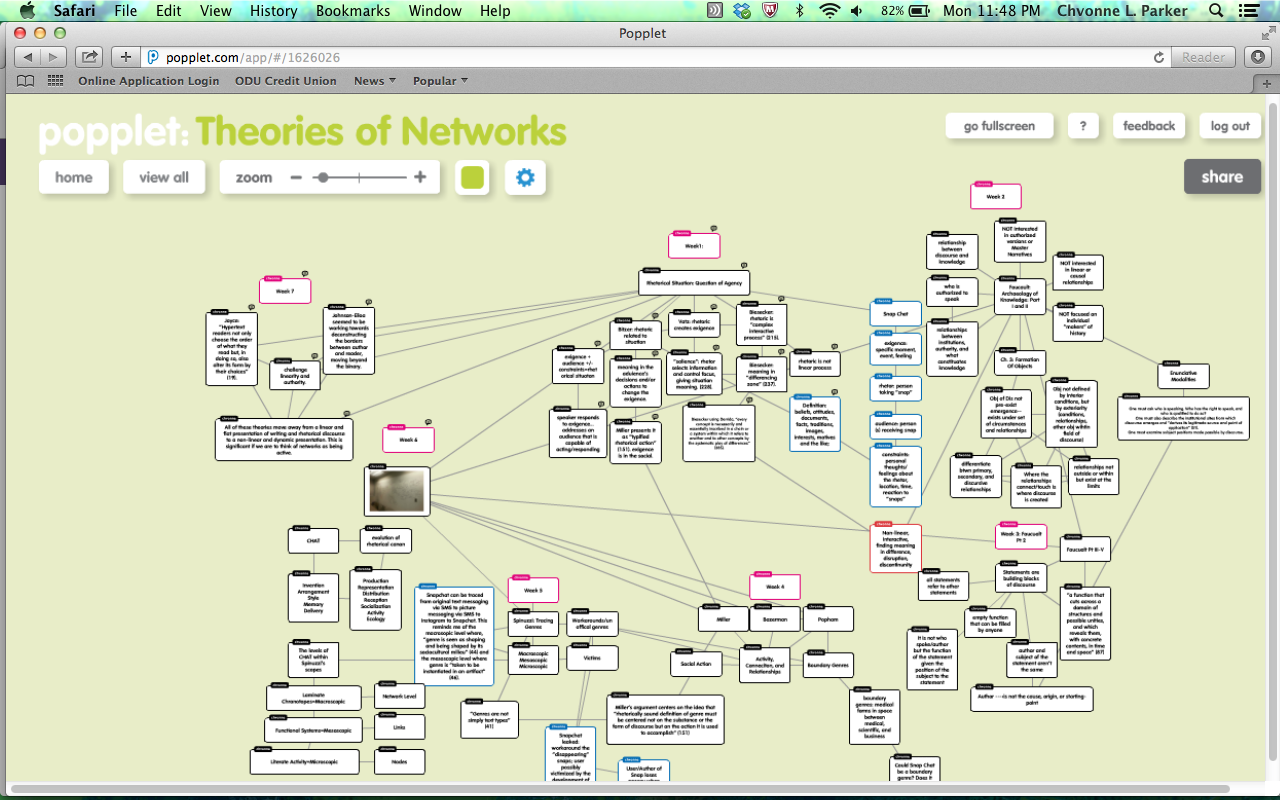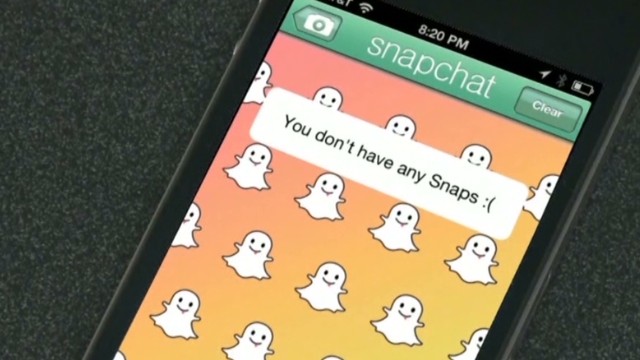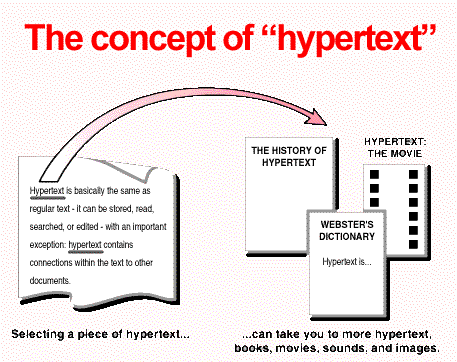Literature Review
Snapchat is a photo messaging application that is often discussed as a social network. Many of the conversations about Snapchat are taking place on blogs, news organizations, magazines, and other mainstream/popular media outlets. However, there is little scholarship about Snapchat. As much has not been written, this review will examine emerging scholarship on Snapchat, which has focused on two areas: ephemerality and sexting (both rooted in privacy)
Ephemerality
Photo messaging is nothing new. What makes Snapchat so significant is that the messages disappear. Kotfila argues that Snapchat, and other self-destructing applications, are the “solution, shifting control over digital communication back to owners” (12). People have traditionally trusted that their private communications were beyond the reach of the public, until technology enabled massive data aggregation. Some information, even if it has been publicly available, is shrouded in “practical obscurity,” because the cost of retrieving it is excessive. But practical obscurity has been diluted by data recording, copying and easy dissemination. The tide is turning with emerging technologies incorporating self-destruct functionalities that obliterate images, texts, videos and pdfs in a time period specified by the owner. Similarly, Shein explores the societal desire for and implications of these new technologies. Shein argues that ephemeral data is the wave of the future because people are more concerned about the traces that they leave online and the potential for the data generated to harm them in the future. Social media was designed to store data. However, people are moving toward replicating the ephemerality of real world conversation in the digital world. Shein goes on to examine the motivations behind the desire for ephemeral data. Shein concludes by discussing the fact that the data is not in fact ephemeral. There are ways to circumvent the software via screenshots, hacking, and using other devices. Because of the advances in technology, software and hardware are designed to store information, so the applications are in a sense faking the ephemerality.
Sexting
Snapchat and sexting have become synonymous since reports of teens using Snapchat for sexting and cyberbullying surfaced in 2013. Poltash presents that personal pictures have been a very common part of social media for years. It often happens that photos are usurped and used for ulterior motives, which has brought about privacy concerns. This issue of privacy is exacerbated by Snapchat and further complicated by sexting. Poltash notes, “the company’s deletion of messages from its serves has led to a widespread alternative use for Snapchat: sexting” (11). The idea that snaps self-destruct, giving users (especially teens) a sense of security because their discretions, supposedly, will not come back to haunt them. Poltash also notes that Snapchat is being used to share explicit drawings, to share underage drinking, and to cheat on tests. From the a legal standpoint, sexting is a dangerous endeavor for teens. If these explicit snaps are revealed, through screen capture, secondary photo, or technological infiltration, teens risk damaging their reputation, hindering job opportunities, and being bullied.
Trust and Snapchat
Jenny Davis complicates the discussions of ephemerality and sexting by adding the concept of trust to the conversation. Davis argues that although Snapchat solves the problem of sharing sensitive (erotic) communications via a network, it has “unique” and “possibly problematic” implications. Davis presents that within the network limited agency resides with the person who produces an image. However, once the image is put out into the network “it belongs–rightly or wrongly–to The Internet.” The image can either be unseen or spread quickly through the network. Snapchat can prevent this spread from occurring. Davis states, “Snapchat ostensibly helps users circumvent privacy concerns within networked publics. Or, more specifically, Snapchat should alleviate the worry inherent in digitally mediated intimate contact.” However, there is a major issue with Snapchat. Through the lens of technology as mediated action, Davis argues that Snapchat causes the “displacement of trust from a message recipient, to the technology itself”. Sexting is an intimate act, which means there is a certain level of trust between the sender and the receiver. Davis argues that Snapchat changes this trust. It provides users a sense of safety and privacy, but “the technology now–not the recipient—is the trusted object”. The unstated code of Snapchat users (not taking a screenshot or picture of the snap) and even more so, the application, itself, prevents the information from reaching the networked public.
This is significant in regards to thinking about Snapchat as a network. Explorations of Snapchat have not moved much beyond disappearing snaps and privacy/security issues. As Davis identified, trust and agency are significant elements of the conversation. Looking at Snapchat through the lens of the network will allow examination of agency. So, for this case study, I will use Prior et. al and Latour’s discussions of activity to analyze Snapchat as a network. These theories offer a way to explore activity and agency.

Source KPCB estimates based on company data retrieved from NoraBella
What is the network?
CHAT could possibly define Snapchat as a combination of production, representation, distribution, and reception of practices within a laminated chronotope. The communications within Snapchat are produced by users within a particular context or moment. These communications are “entextualized in talk, text, and mind” by users through the addition of text or drawing to the snaps, which are then disseminated to other users via the application. The user modifies this distribution by deciding how long the recipient has to view the communication. The last part of the activity centers on the “actual reading/viewing/hearing and response” to the communication. As a tool that sends interactive messages between users, activity within Snapchat is “situated in concrete interactions that are simultaneously improvised locally and mediated by historically-provided tools and practices” (Prior et. al). The snaps or communications are made concrete (although temporarily) with smartphone cameras by users, who wish to capture a fleeting moment using a mediation of SMS.
ANT could possibly define Snapchat as a network of actors circulating intermediaries or traces of connections between actors. Actors in Snapchat would include the application, users, service providers (and their hardware–cell towers), and the server on which the data is stored. Additional actors could be added depending on the number of people who receive the snap and their individual service providers (and their hardware). ANT would probably include all aspects of the system which enable the communication between users to take place. If networks are formed by actors sending intermediaries among themselves, then Snapchat is a network, as users send snaps among themselves. These specific data transmitted between users disappears (is hidden). However, the interactions themselves are not. The application creates a best friend list for users that shows which users interact more with one another. For example, if user A sends the majority of their snaps to user Z, user Z will be listed as user A’s best friend. The interactions between users are recorded and the level of activity described.
What are Nodes?
Nodes within CHAT are literate activity. Literate activity is “action and cognition[…] distributed over time and space and among people, artifacts, and environments […]” (Prior et. al). Therefore, nodes within Snapchat would include the users, who send communications to one another. The software would also be a node within the network because it facilitates the activity. In addition, the hardware would be a node. The smartphones, on which the application functions, facilitate distribution. Furthermore, the service providers and the servers are apart of the network due to their control over access and data. Within the ongoing conversations about Snapchat, these nodes would create the literate activity within the social network.
ANT defines nodes as actors. As mentioned above, the actors are numerous. Every aspect of the network—both human and nonhuman—can have agency. This means that the hardware and the software involved in making communications in Snapchat possible are apart of the network. Latour presents that “anything that does modify a state of affairs by making a difference is an actor” (71). He presents that when deciding about actors one should ask: “Does it make a difference in the course of some other agent’s action or not? Is there some trial that allows someone to detect this difference?” (71). I would argue that because the application is designed to hide the data from users, stored on the servers, and can be hacked by others (users and non-users of Snapchat) that the hardware and software are actors in the network.
Agency of Nodes
Through CHAT the agency would shift between hardware and the software. The users of Snapchat are responsible for the production, representation, and reception of the communications. They have primary agency as creators of the data that moves through the network. The service providers can be said to have greater agency as they control access to the network and allow the data to travel through the network. Also, once the time for the snap has lapsed, the technology and its creators (service providers and servers) would have primary agency. They alone would have access to and control over the communication. The user would be unable to access the communications without technological know how. It seems that primary agency is with the users; however, after the snap disappears the users have no agency. The agency shifts to the company, itself. Technically, the agency lies with the technology; it is with the server on which the snap is saved.
Within ANT, the temporary connectivity that the snaps provide and the “disappearing” of the snaps are enabled by the hardware and software. The users would not be able to utilize the network without these technologies. However, these technologies would lie dormant if users were not creating and sending snaps. So, the object actors and the human actors both have agency. There is no primary agency in this instance, as all parties are needed for the network to function
Location of Nodes
Although the agency shifts within the network, Snapchat’s nodes would be located within different categories in the Remapping Rhetorical Activity: Take 2. There is a hierarchy with the network. The users operate within the literate activity part of the system; they are a part of “individual and collective invention,” “style and arrangement,” “the way particular media, technologies, and social practices are disseminated,” and “how meaning is made under what conditions and for what ends.” (Prior et. al). The application developers, service providers, and the actual technology operate on the literate activity and the functional level of the system. This aspect of the network is responsible for the distribution of the data within the network. Those who control the hardware “tie together people, artifacts, practices, institutions, communities, and ecologies” (Prior et. al). Snapchat facilitates literate activity (snaps within the application space) within the functional system of the social network for a specified period of time.
As there is no primary agent in ANT, the nodes are not situated in categories or hierarchies. Latour argues for “keep[ing] the social domain completely flat” (171; original emphasis). I interpreted this as avoiding hierarchies. This is important as hierarchies would situate human actors higher than nonhuman actors. The lack of hierarchies make the relationship between the hardware, software, and the users both necessary and interrelated.
Relationships between Nodes
CHAT and ANT would present the relationship between nodes as centered on interaction. It functions as an “interlocking system within which rhetors are formed, act, and navigate” (Prior et. al). CHAT emphasizes ecologies, which operate within literate activity and function systems; ecologies “point to the biotic and natural world, which enables and constrains all the previous functions and which may also be a domain of rhetorical action” (Prior et. al). In this context, the users of Snapchat enter the application, which the developers created, create their snaps and send them, utilizing the technology and data of the service providers. Once the snap has been viewed by the recipient, the snap disappears from all users. In actuality, the snaps are only hidden from users and stored by providers. Snapchat’s function is a system in which users, creators, and hardware work together to mediate activity. The relations have to remain active in order for the network to continue. The users of Snapchat must continue to send snaps in order for their connections and the network to remain active. There is an emphasis on the and information flow among the nodes (Latour 217).
Movement within the Network
In Snapchat, data (in the form of photo messages) moves within the network from one user through the application and the service provider to the recipient and then to hide on the server after the user designated time has lapsed. Through the lens of CHAT the movement of data would be distribution. Distribution is “the way particular media, technologies, and social practices disseminate a text and what a particular network signifies.” Distribution takes place on the part of the users and the controllers’ of technology. The users decide on when to deliver the communication and how long recipient(s) will have to view the communication. The controllers’ of the technology also control distribution by facilitating (and to some extent controlling) the movement of the data through the network from one user to the other.

Snapchat’s Best Friends List retrieved from www.forbes.com
ANT may describe the movement within Snapchat as traces or assemblages of connections within the social network. The network part of this is clear. The social part is defined, by Latour, as “made to circulate inside tiny conduits that can expand only through more instruments, spending, and channels” (241). Moreover, Snapchat would be a part of society; it is “what travels through everything.” (241). The interactions on Snapchat are connections among users within the network. These interactions are traced by the software and stored on the hardware. These relations are a process that must continuously performed for the connections to persist and for the data to move through the network.
Meaning within the Network
Within CHAT meaning is literate activity, specifically reception and socialization, in the functional system. Reception is defined as “actual reading/viewing/hearing and responses, how meaning is made under what conditions and for what ends. It is a mental and social activity. Reception can be, and often is, actively shaped by writers or distributors” (Prior et. al). The activity of creating and sending a snap is the literate activity. The meaning resides with the writer upon the production/creation of the snap. However, control of meaning shifts to the receiver upon viewing the snap. It is up to the recipient to make meaning of the snap and/or respond to the snap. Socialization is defined as “the making of people and the making of society in concrete history. As individuals engage in cultural practices, they are involved in apprenticeship, learning, and development. As situated engagement in cultural practices, unfolds, society is (re)produced, that is, transmitted and transformed in activity” (Prior et. al). Through this lens, Snapchat could be read as literate activity of socialization within the functional system of the social network. Snapchat was created as a response to current social media and as a need to provide privacy for social network users. Since its inception, Snapchat has, as shown in the literature, impacted the way that people utilize messaging applications. The activity of photo messaging has been transformed because of Snapchat.
Meaning within ANT is a confusing aspect of the theory. In the beginning of his discussion of ANT, Latour emphasizes “the social cannot be construed as a kind of material or domain” (1). Thus, the focus is not on meaning. The social is defined a “trail of associations” that ANT aims to map. Since ANT aims to avoid the essentialist notions of the social, there isn’t a focus on meaning. This works for an application like Snapchat because the communications that move through the network are not readily available for analysis or interpretation. However, the functions of the network and the traces of the connections are available.
Emergence, Growth, and Dissolution of the Network
Through CHAT and ANT the network emerges, grows and dissolves based on the actions of the actors. The actions of the actors cause the network to be active and emerge. On the other hand, the emergence of the network could be the literate activity of the application creators, who made it possible for the network to exist by creating the software to connect and distribute the data of the users. However, the users of Snapchat must continue to utilize the application and make connections with other users in order for the network to grow. If the users do not send data in the form of snaps then the network will be static or dissolve. The application creators and service providers also have some stake in the dissolution in the network due to their control over and access to the data that moves through the network.
Conclusion
CHAT and ANT, unlike Rhetorical Situation theory, allowed me to discuss Snapchat as a more complex network. Through these theories, I was able to examine the activity of the network in general terms rather than being caught in the binary of exigence or author. Snapchat is a limited network in that much of the network is dependent on connections already held by the user, and the users continued utilization of these connections. Using CHAT and ANT, I expanded my analysis to include those who create and control the technology and the technology (smartphone and application). Before, I was hesitant to label Snapchat as a network. It is a network in a sense that the application is networked and that technology is required for the application to work. However, it is not a social network in the traditional sense, which is the goal of its creators. Because I was able to include human and non-human aspects of the network, there were few limitations. I feel that CHAT and ANT would have allowed me to say more about the hardware and software as actors in the Snapchat network. I limited this aspect of the discussion due to personal limits on time and space limit on the assignment. Moving forward, I would like to look more at Davis’ argument that users trust is in the application rather than other users. In terms of networks, this is significant because the application (ultimately, the servers) is then a part of the network that holds on the information that is said to have disappeared. CHAT and ANT provided a space for me to discuss the “disappearing” aspect of Snapchat as a part of the network, which is important as Snapchat’s popularity and controversy centers on this feature.
Works Cited
Davis, Jenny. “In Snapchat We Trust.” Cyborgology. The Society Pages. 12 Feb. 2013. Web. 22 March 2014.
Kotfila, Christopher. “This Message Will Self-Destruct: The Growing Role of Obscurity and Self-Destructing Data in Digital Communication.” Bulletin of the Association for Information Science and Technology. 40.2 (2014): 12-16. Web. 22 March 2014.
Latour, Bruno. Reassembling the Social: An Introduction to Actor-Network-Theory. Oxford: Oxford University Press, 2005. Print.
Poltash, Nicole A. “Snapchat and Sexting: A Snapshot of Baring Your Bare Essentials.” Richard Journal of Law and Technology. 19.4 (2013): 1-10. Web. 21 March 2014.
Prior, Paul, et. al. “Re-situating and Re-mediating the Canons: A Cultural-Historical Remapping of Rhetorical Activity: A Collaborative Core Text. Kairos, 11.3 (Summer 2007). Web. 31 March 2014.
Shein, Esther. “ Ephemeral Data” Communications of the ACM. 56.9 (2013): 20-22. Web. 22 March 2014.








